
Mycenae, one of the most important archaeological sites of Greece, was a fortified citadel, nested over the fertile plain of Argolis near the seashore in the northeast Peloponnese. It was the largest and most important center of the Mycenaean civilization, the culture of which dominated the mainland Greece, the Aegean islands, and the shores of Asia Minor during the late Bronze Age. The term Mycenaean is often used in reference to the Late Bronze Age of mainland Greece in general and of the islands except Crete.
During the Mycenaean period, the Greek mainland enjoyed an era of prosperity centered in Mycenae and other important cities like, Tiryns, Thebes, and Athens. Apart from utilitarian objects of pottery and bronze items, the locals also produced luxury items, such as carved gems, jewelry, vases in precious metals and glass ornaments and all those Mycenaean goods were widely traded throughout the Mediterranean world. Despite being bold traders, the Mycenaeans designed and built remarkable bridges, created elaborate drainage and irrigation systems, erected fortification walls, and beehive-shaped tombs. They were fierce warriors too. According to Homer, Mycenae was the seat of Agamemnon, who led the Greeks in the Trojan War. However, the courageous stories centered around Agamemnon, Achilles and Odysseus were probably a myth, based on a real conflict or series of conflicts between the Mycenaeans and the Hittites.
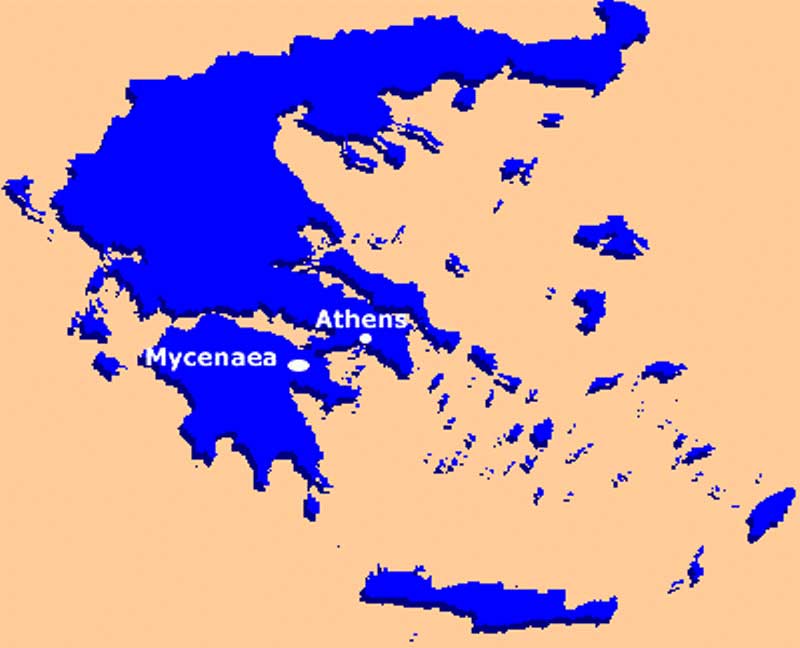
History is silent about the founder of Mycenae. According to Greek legends, it was founded by the legendary hero Perseus, son of Zeus and Danae, who left Argos for Tyrins and later employed Cyclopes to build the walls of Mycenae with giant stones. Homer indicated that, it was named after a beautiful nymph called Mycene, while other theories credit the mushroom-shaped handle of Perseus' sword.
The end of the Mycenaean civilization came in 1200 BC. Though the real reason behind the general collapse of the Mycenaean culture is really unknown, the scholars suggested a handful of reasons, which include the natural disasters like, earthquakes, volcanic explosions, and tsunami and other elements like, overpopulation, internal social and political unrest, climatic change and invasion from foreign tribes.
The Archaeological Sites of Mycenae and Tiryns are the imposing ruins of the two greatest cities of the Mycenaean civilization, located in the Regional unit of Argolis in the North-East Peloponnese. Mycenae, an acropolis site, situated on a rocky hill 900 feet above sea level, about 90 km (56 miles) southwest of Athens and commanding over the surrounding plain as far as the sea 15 km away, covered an area of about 30,000 square metres.
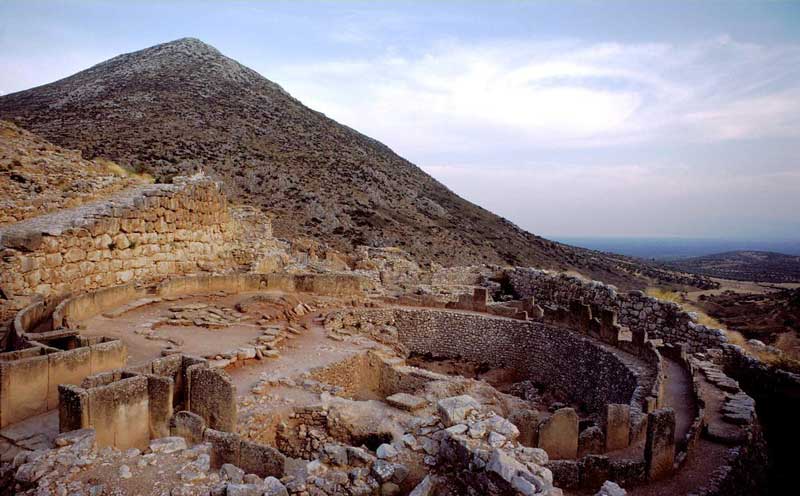
Beginning from the 14th century BC, the first large-scale palace complex was built on three artificial terraces. The huge complex included the Treasury of Atreus or the Tholos Tomb, a monumental circular building with a corbelled roof. The palace was accessed by a 36 m long and 6 m wide unroofed corridor, complete with two guard rooms. The roof of the palace had a height of 13.5 m and a diameter of 14.6 m and was built around a central hall or Megaron, with its four columns arranged in a square around the sacred hearth. Other features of the palace include a secondary hall, a workshop complex and many private rooms. During its prime time, the palace was lavishly decorated with vivid frescoes and mosaics.
It is estimated that the first palace was destroyed in the late 13th century, probably by an earthquake and then repaired, rather poorly. Later, a majestic staircase and a ramp were added to the North Gate of the acropolis. The walls were also extended to include the Perseia spring within the fortifications. However, the second Palace was also destroyed, possibly by fire. In fact, as it is mentioned earlier, the actual reasons for the destruction of Mycenae and the collapse of the Mycenaean civilization are not very clear.
The acropolis, surrounded by fortified walls of roughly worked large stone blocks, were complete with flood management structures such as dams, roads, Linear B tablets. An increased import of quality potteries evidences its cultural zenith during the prime Mycenaean period.
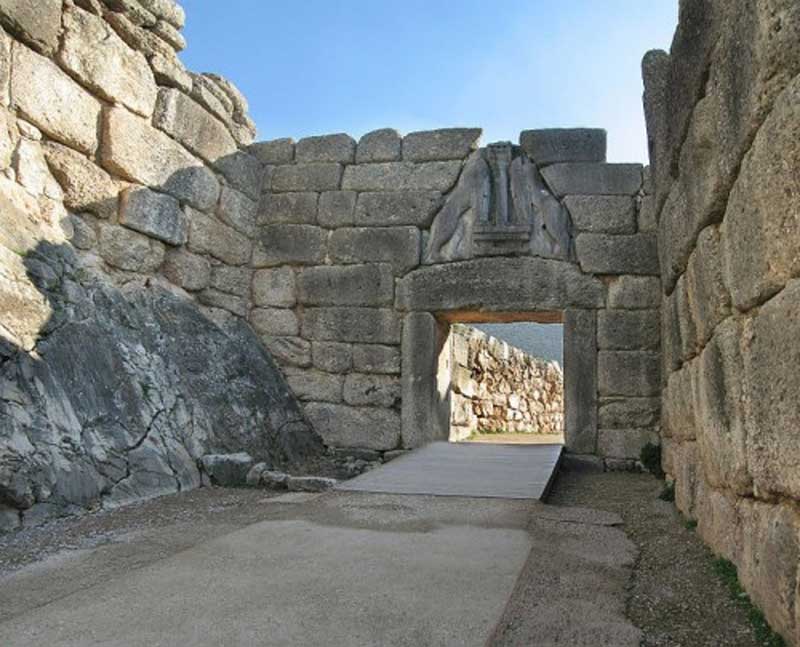

A monumental entrance known as the Lion Gate added more splendor and grandeur of the complex, which guarded and provided the main access to the citadel. The square sized Lion Gate, measuring 3m x 3m with an 18-ton lintel, topped by two 3 m high heraldic lions and a column altar, is simply amazing.
It is the first example of representational monumental sculpture in the European continent. While its significance has been lost in the depths of history, its placement above the main gate of the most powerful citadel of late Bronze Age has led to the speculation that it symbolized something important like a family crest of a coat of arms.
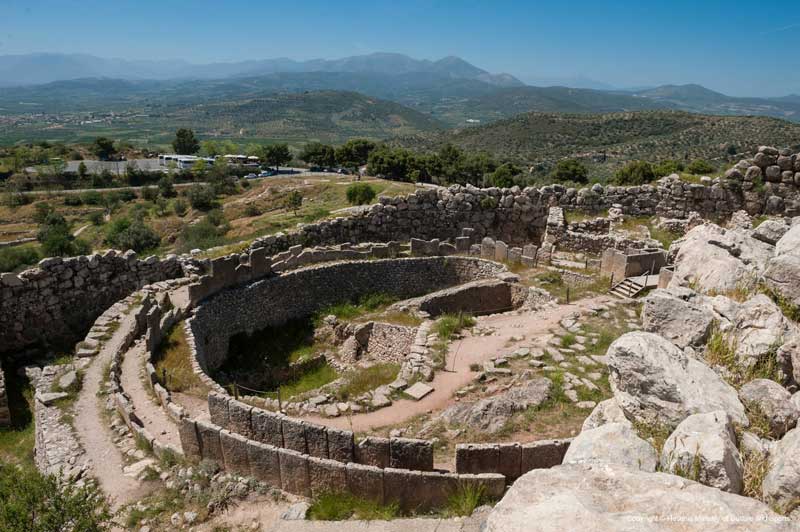
The excavated Grave Circle A, located immediately to the right inside the Lion Gate, is one of the most striking and significant features of the archaeological site of Mycenea. The circular burial area with a diameter of 27m is enclosed by a double ring of upright, dressed stone slabs, which were probably filled with rubble and capped with more rectangular slabs to give a solid wall appearance. This was the location of the royal burials that have yielded a host of priceless Mycenaean funerary artifacts, most of which are now displayed at the National Archaeological Museum of Athens and at the Mycenae Museum.
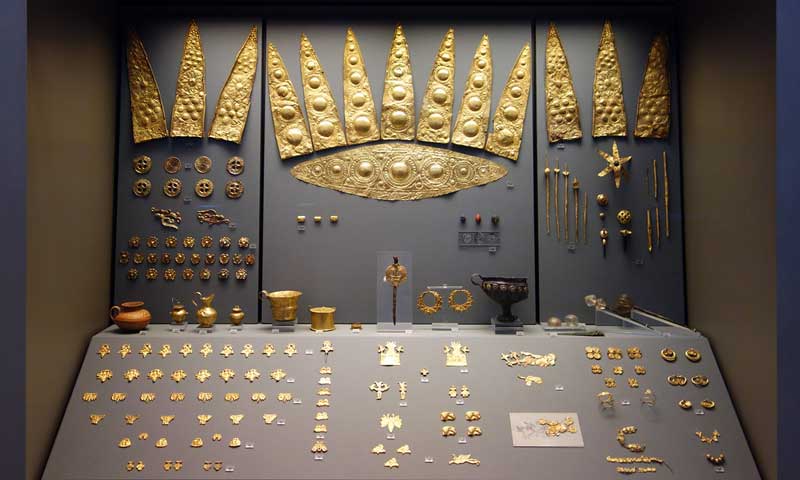
The Treasury of Atreus, also known as the Tomb of Agamemnon, is the largest and the best preserved of the nine tholos or beehive tombs on the Panagitsa Hill at Mycenae. Though the name implies that Agamemnon was buried in it, there is no evidence to prove it. Constructed during the Bronze Age, around 1250 BC, with its diameter of 47.57 feet (14.5m) and an interior height of 44.28 feet (13.5m), it was the tallest and widest dome in the world for more than a thousand years. The Dromos, a short passage led from the tholos chamber to the actual burial chamber, which was dug out in a nearly cubical shape. The tomb was looted by Veli Pasha during Ottoman rule, but otherwise is in excellent shape and shows exceptional masonry craftsmanship.
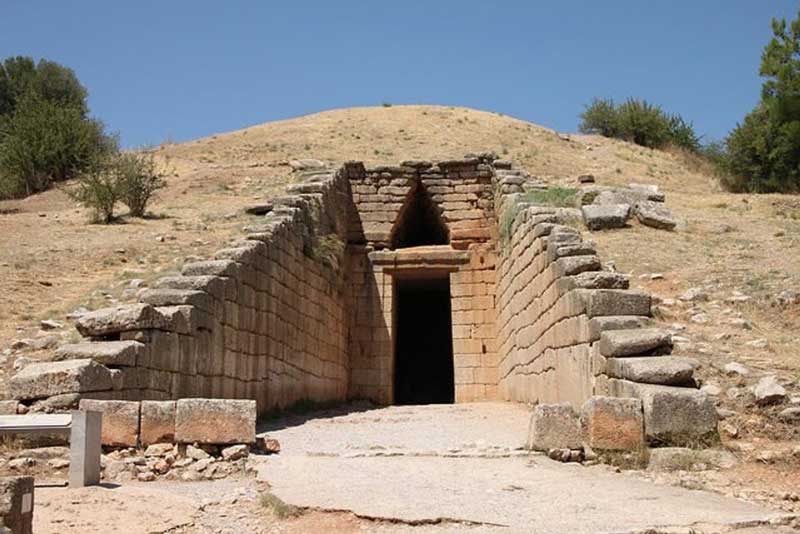
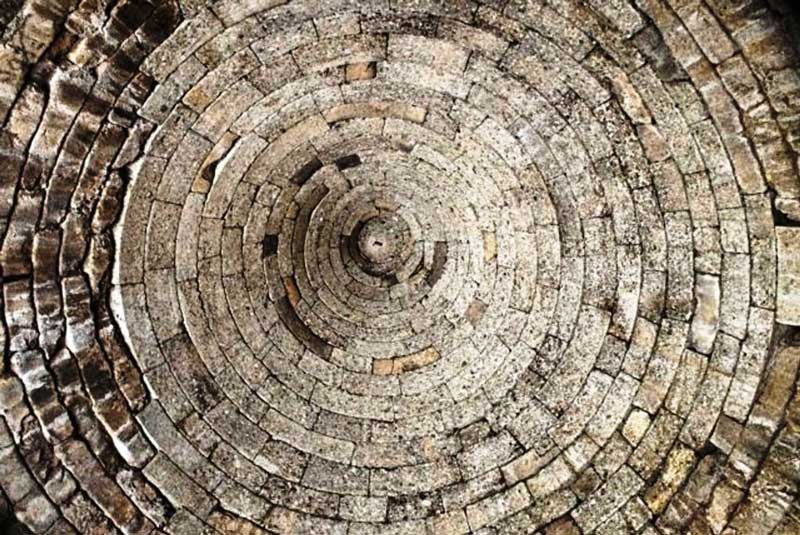
Greek archaeologist Kyriakos Pittakis was the first to excavate the site of Mycenae in 1841, when he found and restored the Lion Gate. Heinrich Schliemann, a German businessman and a pioneer in the field of archaeology, excavated deep shafts all over the acropolis in 1874. Since then, many scientific excavations have taken place at Mycenae, mainly by the Greek archaeologists and the British School at Athens.